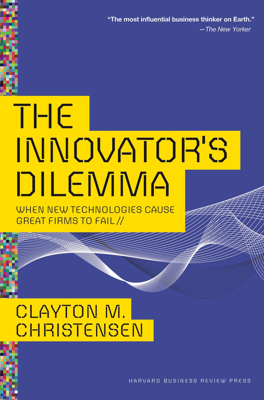Managing Disruptive Technological Change: A Case Study
Determining if a Technology is Disruptive
- Key Questions: Assess if electric vehicles (EVs) are a disruptive threat and opportunity for growth.
- Trajectory Mapping:
- Compare current mainstream market needs (e.g., cruising range, acceleration) with the capabilities of EVs.
- Market needs are relatively flat, whereas EV performance is improving faster.
- Disruptive Indicators: EVs signify disruption due to their unique attributes and faster performance improvement relative to market needs.
Identifying the Market for Electric Vehicles
- Non-Mainstream Markets: Initial use of EVs won't be in mainstream markets due to unmet performance requirements.
- Market Discovery Approach: Focus on finding non-traditional markets where EV attributes (e.g., limited range) are valued.
- Learning through Action: Conduct real-world market experiments rather than relying solely on market research or expert opinions.
Product and Technology Strategies
- Simple and Convenient Design:
- Prioritize simplicity, reliability, and quick, convenient recharging.
- Design a platform that allows for easy modifications and cost-effective adjustments based on market feedback.
- Low Price Point: Ensure an affordable sticker price even if operating costs are higher, akin to initial strategies for personal computers and hydraulic excavators.
- Proven Technology Use: Leverage existing technologies in novel ways rather than waiting for technological breakthroughs like advanced batteries.
Distribution Strategies
- New Distribution Channels: Create or utilize alternative distribution channels not dependent on mainstream dealers focused on gasoline-powered vehicles.
- Economic Compatibility: Ensure that distribution models align with lower-margin, higher-volume sales typical of disruptive products.
Organizational Structure for Managing Disruptive Innovations
- Independent Organization Creation: Spin off an autonomous unit or company focused solely on EV commercialization to ensure dedicated resources and attention.
- Importance of Independence:
- A small, independent organization can thrive on small initial wins and be motivated by manageable growth targets.
- Avoids the constant defense of the EV project's viability within a large company's mainstream operations.
- Management Approach: Emphasize the importance of learning and adapting quickly, with an ability to tolerate and learn from small-scale failures.
Implementing Effective Product, Technology, and Distribution Strategies
- Prototype Development: Develop initial models tailored for specific markets, like teenagers or urban taxi services, to uncover the most viable applications.
- Iterative Learning: Stay flexible and ready to pivot based on real-world market responses, conserving resources for continuous improvement and second or third attempts.
- Distribution Channel Exploration: Experiment with unconventional outlets like sporting goods stores for motorbikes or discount retailers for consumer electronics, reflecting historical patterns with disruptive innovations.
Notes
- Legislative changes and delays impacting EV mandates.
- The critical role of non-traditional market research methods for disruptive innovations.
- Real-world action and experimentation as key strategies for discovering disruptive markets.
This chapter underscores the principles from earlier chapters, emphasizing the need for a structured, flexible approach to manage disruptive technological change successfully.
